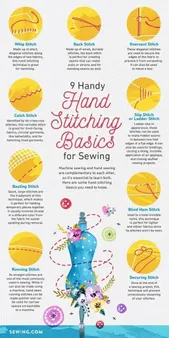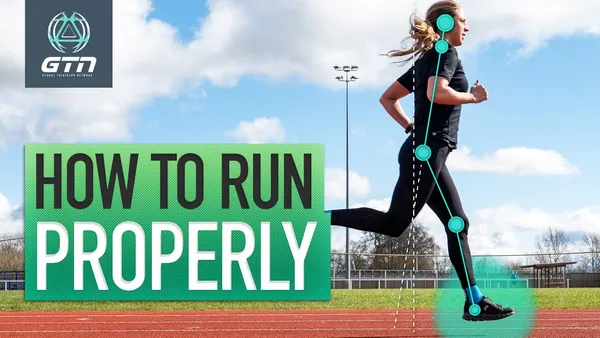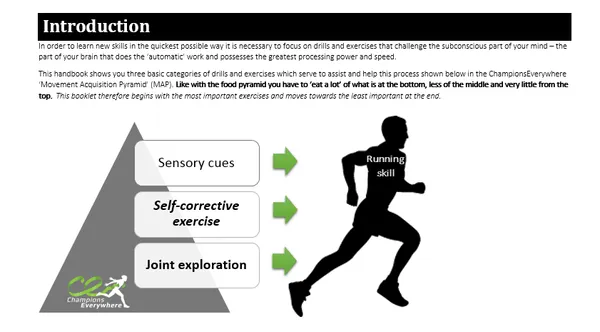Table of Contents
Welcome to Kizworld, your ultimate resource for learning How to learn the basic running skills and techniques! Whether you're a complete beginner or an experienced runner looking to improve your form, our comprehensive guide has everything you need to know. Discover the benefits of running, get started with the right running shoes and proper form, stay safe while running, and learn how to prevent common injuries. Plus, we'll provide tips on how to improve your running speed and endurance, whether you're running for fitness, weight loss, or simply for fun. Get ready to lace up your running shoes and embark on a healthier, happier lifestyle with kizworld!
How to Learn the Basic Running Skills and Techniques: A Comprehensive Guide for Beginners
I. The Basics of Proper Form
The Basics of Proper Form
Maintaining Proper Posture
When running, it's important to maintain proper posture to avoid injuries and improve your running efficiency. Keep your head up and your eyes focused forward, not down at your feet. Your shoulders should be relaxed and your back should be straight, not hunched over. Your arms should swing naturally at your sides, and your elbows should be bent at a 90-degree angle. Your core should be engaged, and your hips should be slightly forward.
Here are some tips for maintaining proper posture while running:
- Imagine a string pulling you up from the top of your head.
- Keep your shoulders relaxed and down.
- Engage your core and pull your belly button in.
- Slightly tuck your chin.
- Look straight ahead, not down at your feet.
Read more about how to improve your running speed and endurance.
Taking Proper Strides
Your stride length and cadence (steps per minute) are also important factors in running form. Your stride length should be comfortable and natural, not too long or too short. Your cadence should be around 180 steps per minute. This will help you maintain a good pace and avoid injuries.
Here are some tips for taking proper strides while running:
- Take short, quick steps.
- Land on your midfoot, not your heel or toes.
- Push off with your toes, not your heels.
- Keep your feet close to the ground.
- Don't overstride.
Read more about how to choose the right running shoes.
Breathing Properly
Breathing properly is essential for running. When you run, you need to take in more oxygen to fuel your muscles. You should breathe deeply and rhythmically, through your nose and mouth. Avoid shallow breathing, as this can lead to fatigue and shortness of breath.
Here are some tips for breathing properly while running:
- Take deep, rhythmic breaths.
- Breathe through your nose and mouth.
- Avoid shallow breathing.
- If you're feeling out of breath, slow down your pace.
- Practice breathing exercises to improve your lung capacity.
Read more about the benefits of running for health and wellness.
II. How to Develop Good Running Technique
How to Develop Good Running Technique
Running can be a great way to get exercise and improve your overall health. However, it's important to have good running technique in order to avoid injuries and get the most out of your workouts. Here are some tips for developing good running technique:
1. Start by warming up with some light cardio
A warm-up helps to increase your heart rate and get your muscles ready for the workout ahead. Try some light cardio for 5-10 minutes, such as walking, jogging, or cycling. Start slowly and gradually increase your speed and intensity as you warm up.
2. Pay attention to your posture
Keep your head up and your shoulders relaxed. Your back should be straight and your core should be engaged. Your arms should be bent at a 90-degree angle and swing naturally by your sides. Your feet should strike the ground with a midfoot strike, landing under your body rather than in front of it.
3. Focus on your breathing
Inhale through your nose and exhale through your mouth. Try to find a breathing rhythm that feels comfortable and natural. If you're feeling out of breath, slow down and shorten your strides until you can breathe more easily.
| Tip | Description |
|---|---|
Keep your head up and your shoulders relaxed | This will help to prevent neck pain and headaches. |
Your back should be straight and your core should be engaged | This will help to protect your back and prevent injuries. |
Your arms should be bent at a 90-degree angle and swing naturally by your sides | This will help to keep your stride balanced and efficient. |
Your feet should strike the ground with a midfoot strike, landing under your body rather than in front of it | This will help to reduce stress on your knees and ankles. |
4. Take shorter strides
Taking shorter strides will help you to maintain a faster pace and reduce the risk of injuries. Aim for about 180 steps per minute.
Start slowly and gradually increase your speed as you get more comfortable running. Don't try to go too fast too soon, as this can lead to injuries and burnout. Listen to your body and take breaks when you need them.
5. Stay hydrated
Drink plenty of water before, during, and after your run. Dehydration can lead to fatigue, headaches, and other problems. Aim for 8-10 glasses of water per day.
6. Cool down with some light stretching
A cool-down helps to bring your heart rate and breathing back to normal. It also helps to prevent muscle soreness. Try some light stretching for 5-10 minutes, such as touching your toes, stretching your hamstrings, and lifting your legs in front of you.
With practice, you can develop good running technique and enjoy all the benefits that running has to offer. Just remember to warm up, pay attention to your posture, focus on your breathing, take shorter strides, stay hydrated, and cool down.
III. Different Types of Running Techniques
Different Types of Running Techniques
There are many different running techniques that runners can use to improve their performance and efficiency. Some of the most common techniques include:
- Cadence: The number of steps you take per minute. A higher cadence can help you run more efficiently and reduce your risk of injury.
- Stride length: The distance between your feet when you take a step. A longer stride length can help you run faster, but it can also increase your risk of injury.
- Foot strike: The way your foot lands on the ground when you run. There are three main types of foot strike: heel strike, midfoot strike, and forefoot strike.
- Arm swing: The way you swing your arms when you run. A good arm swing can help you maintain your balance and momentum.
- Body posture: The way you hold your body when you run. Good body posture can help you run more efficiently and reduce your risk of injury.
The best running technique for you will depend on your individual body mechanics and goals. If you're new to running, it's a good idea to start with a basic running technique and then gradually adjust it as you become more experienced.
Here are some tips for improving your running technique:
- Start with a slow pace and gradually increase your speed as you become more comfortable.
- Focus on maintaining a good cadence and stride length.
- Experiment with different foot strike patterns to find the one that feels most comfortable for you.
- Keep your arms relaxed and swing them naturally.
- Maintain good body posture by keeping your head up, your shoulders back, and your core engaged.
By following these tips, you can improve your running technique and enjoy a more efficient and enjoyable run.
If you're looking for more information on running techniques, check out these articles:
IV. The Importance of Practicing Different Techniques
The Importance of Practicing Different Techniques
To become a well-rounded runner, it's important to practice different techniques to improve your running form, speed, and endurance. Here are some of the benefits of practicing different running techniques:
- Improved running form: Practicing different techniques can help you identify and correct any inefficiencies in your running form. This can lead to improved running economy, which means you'll be able to run faster and longer with less effort.
- Increased speed: Practicing different techniques can help you develop faster turnover, which is the rate at which your feet strike the ground. This can lead to increased speed and improved running performance.
- Enhanced endurance: Practicing different techniques can help you develop stronger muscles and improve your cardiovascular fitness. This can lead to enhanced endurance and the ability to run longer distances without getting tired.
- Reduced risk of injury: Practicing different techniques can help you identify and correct any imbalances in your running form. This can help reduce your risk of injury and keep you running healthy.
There are many different running techniques that you can practice, including:
- Cadence: Cadence is the number of steps you take per minute. A higher cadence can help you improve your running form and reduce your risk of injury.
- Stride length: Stride length is the distance between your feet when you take a step. A longer stride length can help you run faster, but it's important to maintain good form.
- Arm swing: Your arm swing can help you generate power and maintain balance. A strong arm swing can help you improve your running form and speed.
- Foot strike: Foot strike is the way your foot lands on the ground. There are three main types of foot strike: heel strike, midfoot strike, and forefoot strike. Each type of foot strike has its own advantages and disadvantages.
The best way to learn how to practice different running techniques is to work with a qualified running coach. A coach can help you assess your current running form and develop a personalized training plan that will help you improve your running technique and performance.
If you're new to running, it's important to start slowly and gradually increase your mileage and intensity. It's also important to listen to your body and take rest days when you need them. By following these tips, you can safely and effectively improve your running technique and performance.
Here are some additional tips for practicing different running techniques:
- Start slowly: Don't try to change your running technique too quickly. Start by making small changes and gradually increase the intensity and duration of your workouts.
- Be patient: It takes time to develop good running technique. Don't get discouraged if you don't see results immediately. Just keep practicing and you will eventually see improvement.
- Listen to your body: If you feel pain, stop running and rest. Don't push yourself too hard. It's important to listen to your body and take rest days when you need them.
- Work with a coach: If you're serious about improving your running technique, consider working with a qualified running coach. A coach can help you assess your current running form and develop a personalized training plan that will help you improve your running technique and performance.
By following these tips, you can safely and effectively improve your running technique and performance.
Here are some related posts that you may find helpful:
- How to Choose the Right Running Shoes
- Proper Running Form
- Common Running Injuries
- How to Improve Your Running Speed and Endurance
- Running for Beginners
V. Conclusion
Running is a great way to improve your overall health and fitness. It's a low-impact exercise that can be enjoyed by people of all ages and fitness levels. Whether you're just starting or you're an experienced runner, it's important to learn the basic running skills and techniques to help you get the most out of your runs. By following the tips and advice in this guide, you can improve your running form, prevent injuries, and achieve your running goals. So what are you waiting for? Get out there and start running!